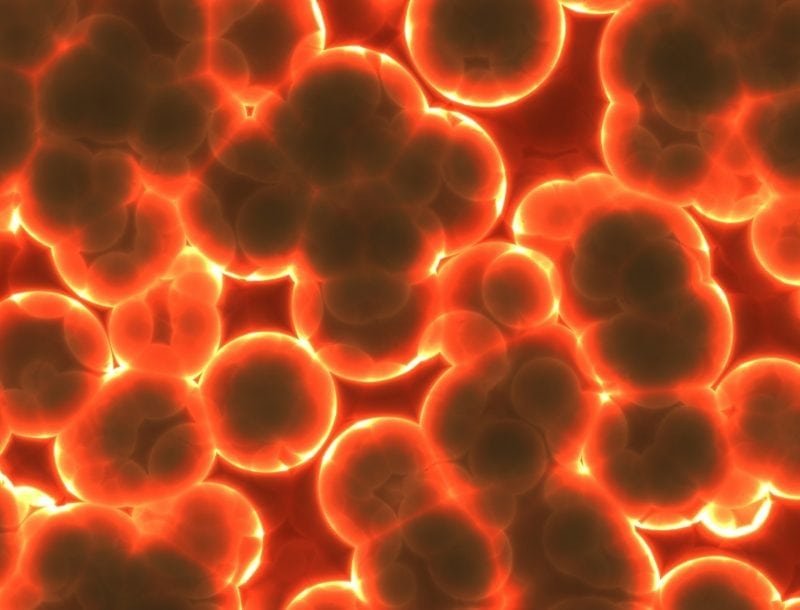
Antibiotic resistance is a major problem that the world is facing as bacterial strains become adept at avoiding the drugs we have against them. As this resistance continues to grow, researchers around the globe have seen the spread of the mrc-1 gene, which grants resistance to colistin, a last resort antibiotic.
What is Colistin?
Colistin is an antibiotic that is used against gram-negative bacteria like E. coli or salmonella. It was discovered in 1949 and served as a primary defense against bacteria until the 1980s.
It was found that colistin had potentially severe side effects and lead to kidney toxicity. However, as drug-resistant bacterial strains started appearing in the 1990s, colistin served as a backup to drugs that faced resistance.
It was thought that colistin would be an essential resource in the future of antibiotics because it would be able to treat infections caused by multi-resistant bacterial strains. Despite the side effects, it was felt that colistin would serve as a last resort if all else fails.
However, as mrc-1 continues to spread, that future is called into question.
Timeline Of MRC-1
In April 2011, mrc-1 was first seen in E. coli when it was isolated from a pig in China. Reported in November 2015, researchers began to see the emergence of mrc-1 genes across the world.
In December 2015, the gene was isolated from farms and human samples in England. Scotland found a person with the gene a year after the discovery was reported in China.
Less than six months after the first findings of mrc-1 in China, the USDA and the US Department of Defense had found the gene in bacteria in a Pennsylvania patient. They had also found the gene in a pig from South Carolina and another from Illinois.
The Center for Disease Control and Prevention launched multiple efforts to prevent further spread of the disease before it became a problem for the agriculture and health systems of the US.
In China, researchers found that the gene was in 15% of raw meat samples and 21% of animal foods between 2011 and 2014.
As it continues to spread, many countries are working towards understanding the gene and stemming its spread. Some places are even calling for a ban on the use of colistin to minimize the chances of further resistance developing.
Analyzing The Spread Of MRC-1
This colistin-resistance gene has been found in hospitals around the globe on all six continents. Previous analysis of the gene had estimated its origin as being pig farms in China due to the excessive use of colistin on these animals.
Researchers conducted new research to verify and get a better picture of the extent of the gene. One of their results showed that the gene began spreading in 2005.
Francois Balloux, from University College London (UCL) in the UK, lead the team to understand the gene’s movements. They sequenced the genomes of 110 bacterial strains and compared them to a genomic database of over 400 mrc-1 positive sequences taken from around the world.
This method allows them to track the gene from its origins in China and its eventual spread across the world. They found that the gene attached itself to bacterial pathogens by latching onto exposed genetic components.
Because mrc-1 is capable of latching onto these genetic components, it is able to spread via different bacterial species and move easily between bacteria, humans, and pigs amongst other hosts.This is one of the reasons that it was able to spread across the globe in only a decade.
According to Lucy van Dorp, one of the researchers from UCL, this method of deciphering the genetic code of the many bacterial strain allowed them to predict how, where, and when mrc-1 started to spread. While not helpful towards stopping mrc-1, the research creates another potential.
Using this genetic analysis as a blueprint, the researchers believe that they can apply it to other potential antibiotic-resistant genes that have the potential to spread as widely as mrc-1.
With many antibiotics facing antibiotic-resistant bacterial strains, it is becoming increasingly clear that we must continue to step up our efforts to mitigate these strains.
The Antibiotic Crisis
Since we started using antibiotics, they have saved countless lives and prevented diseases and infections from becoming a major problem. Unfortunately, as we are learning, our usage of antibiotics has led to the development of antibiotic-resistant strains of bacteria.
Antibiotic resistance is a natural process that is expected to occur as bacteria evolve fast enough. However, the use of antibiotics in humans and animals have accelerated this process.
There is now a growing case of diseases that are becoming harder to treat. They include pneumonia, gonorrhea (and other STDs), and tuberculosis. In 2016, almost half a million individuals around the world got tuberculosis that was resistant to multiple drugs.
Factors like over prescription of antibiotics, frequent use of antibiotics in livestock, and lacking regulations have contributed to the rise of antibiotic resistance.
It is estimated that about 80% of the antibiotics that are sold in the United States go towards treating livestock to increase their quality and yields. As consumers purchase and consume these products, the antibiotics that are used are carried into them. This is one of the more common methods of how resistant bacteria are spread to us.
As many countries work towards developing regulations to stem the use of antibiotics in livestock as well as the frivolous use of it in humans, we can work towards reducing the chance of resistant bacteria spreading.
Along with extensive genetic analysis, like this one here, we can track and prevent the further spread of antibiotic-resistant bacteria while we work to develop new antibiotics and better solution to treating diseases and infections.









